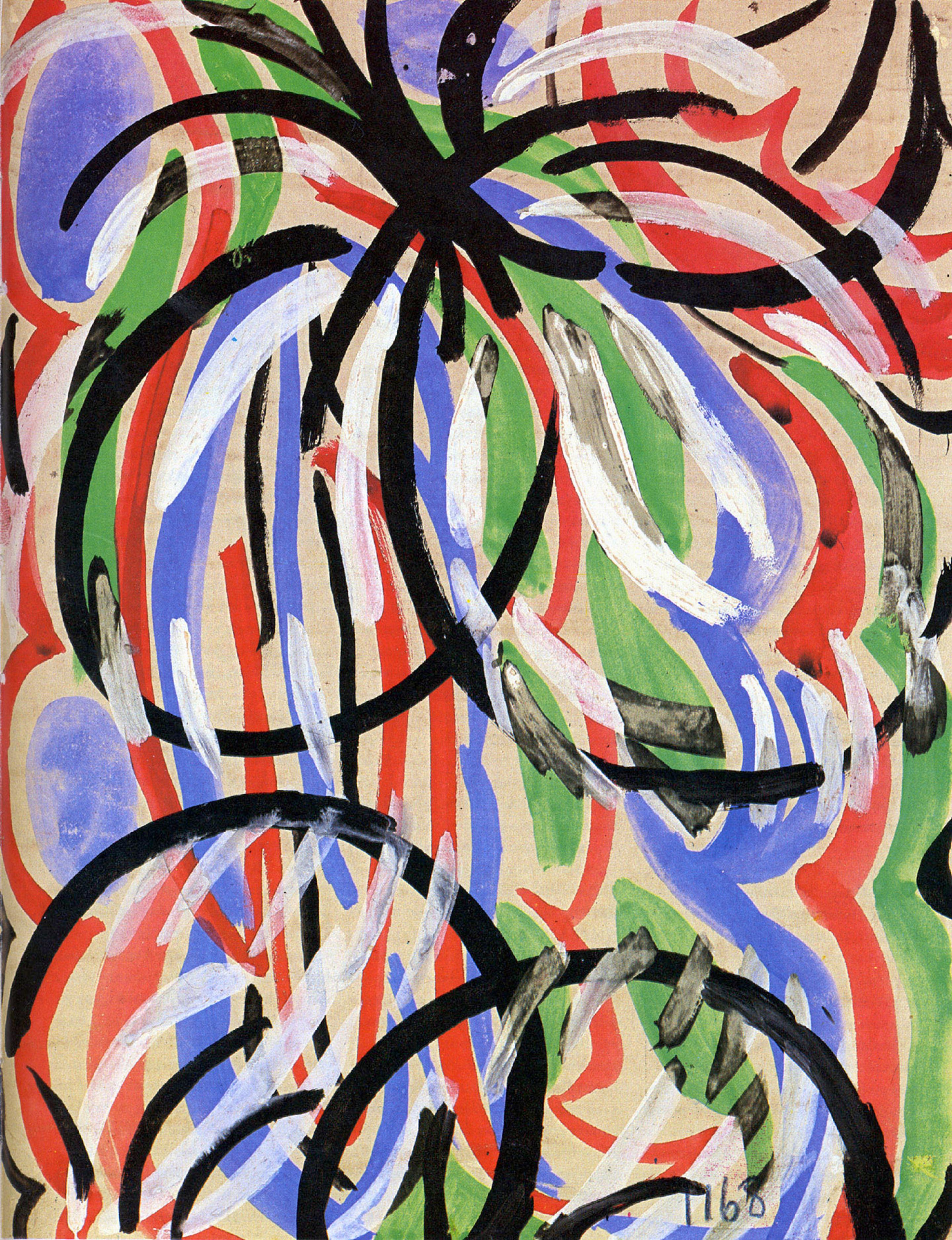SoniaDELAUNAY
Sonia Delaunay. Atelier Simultané 1923 -1934
02.2012–03.2012
Sonia Delaunay. Atelier Simultané 1923 -1934
02.2012–03.2012
Press Release
Sonia Delaunay
Atelier simultané 1923 – 1934
Opening: February 22, 2012
February 23 - March 31, 2012
Atelier simultané 1923 – 1934
Opening: February 22, 2012
February 23 - March 31, 2012
The Marconi Foundation is very pleased to announce the exhibition Sonia Delaunay. Atelier simultané 1923 –1934.
The exhibition is dedicated to the work by Sonia Delaunay, an artist that has transformed the history of art and costume of the last century.
Born in 1885 in Ukraine, her country has been always an important source of inspiration for her work.
She always had in mind the colours of Russian peasants clothes, as the patchwork quilt she made for her son Charles in 1911.
She moved to Paris in 1905 and here she was influenced by Van Gogh and Gauguin’s work and the fauvism. In 1909 she met Robert Delaunay and they got married the following year.
They shared an intense feeling for painting and for colours as the essence of painting.
Robert Delaunay wrote “Colour, which raises from light – as Apollinaire wrote –, is the base of the painter’s means. This is how the painter works with physical elements, which must be dominated by his will.”
The exhibition is dedicated to the work by Sonia Delaunay, an artist that has transformed the history of art and costume of the last century.
Born in 1885 in Ukraine, her country has been always an important source of inspiration for her work.
She always had in mind the colours of Russian peasants clothes, as the patchwork quilt she made for her son Charles in 1911.
She moved to Paris in 1905 and here she was influenced by Van Gogh and Gauguin’s work and the fauvism. In 1909 she met Robert Delaunay and they got married the following year.
They shared an intense feeling for painting and for colours as the essence of painting.
Robert Delaunay wrote “Colour, which raises from light – as Apollinaire wrote –, is the base of the painter’s means. This is how the painter works with physical elements, which must be dominated by his will.”
The colours, distributed on the canvas, produce connections which ricreate in the eyes of the observer, “what is generally called optical blend.”
Their research, based on Chevreul’s theories on colour and on light refractions, led them to the Orphism movement. From 1913 Sonia Delaunay turned her attention to tridimensional works: fabrics, clothes, materials, environment with simultaneous contrasts and abstract creations with chromatic relations.
In 1923 a manufacturer from Lyon was interested in her drawings for fashion design and in 1924 the artist opened the Atelier Simultané: a workplace characterised by a perfect balance, where the conventional barriers among areas could be torn down.
The exhibition, set up on the two floors of the exhibition space, will host a significant part of Sonia Delaunay's work: about two hundred gouaches from 1923-1934, where it’s easy to spot her research on colours, and the relation between shape and background, and her interest for textures and various preparatory studies.
For the gouaches made between 1923 and 1934, Sonia Delaunay spent a great deal of time doing preparatory works which are conserved in the Libri Neri.
In her gouaches, Delaunay anticipates themes that were later developed by other artists such a Dorazio, Morellet, Calder, Vasarely… even though with different features.
Their research, based on Chevreul’s theories on colour and on light refractions, led them to the Orphism movement. From 1913 Sonia Delaunay turned her attention to tridimensional works: fabrics, clothes, materials, environment with simultaneous contrasts and abstract creations with chromatic relations.
In 1923 a manufacturer from Lyon was interested in her drawings for fashion design and in 1924 the artist opened the Atelier Simultané: a workplace characterised by a perfect balance, where the conventional barriers among areas could be torn down.
The exhibition, set up on the two floors of the exhibition space, will host a significant part of Sonia Delaunay's work: about two hundred gouaches from 1923-1934, where it’s easy to spot her research on colours, and the relation between shape and background, and her interest for textures and various preparatory studies.
For the gouaches made between 1923 and 1934, Sonia Delaunay spent a great deal of time doing preparatory works which are conserved in the Libri Neri.
In her gouaches, Delaunay anticipates themes that were later developed by other artists such a Dorazio, Morellet, Calder, Vasarely… even though with different features.







